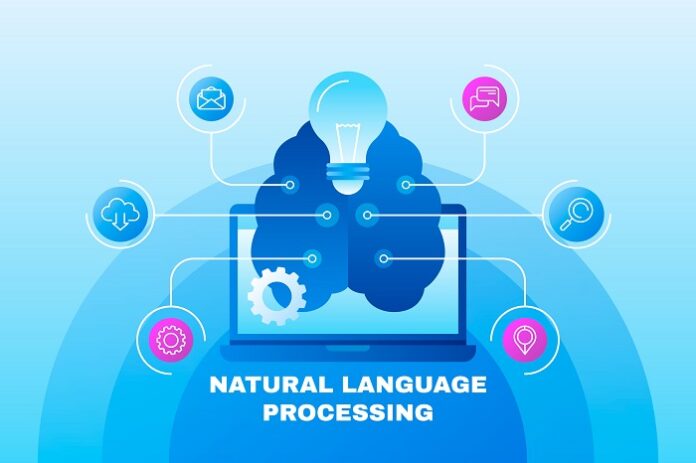From voice-activated assistants to the autocorrection features in our emails. From machine translation apps to chatbots handling customer service queries. Natural language processing (NLP) has become a part of our daily lives. No wonder, as Invesp reports 67% of customers worldwide have already used this technology for customer support in the past year. But its applications extend far beyond, permeating diverse sectors of our daily lives. In this guide, we’ll explore exactly how this NLP magic works. We’ll look at using NLP to solve key document-related tasks. We will also discuss the challenges that NLP faces when analyzing documents. So, without further ado, let’s get down to the point.
What Is NLP and How Does It Work?
Natural language processing, aka NLP, is a branch of artificial intelligence. It allows computers to understand and interpret human language. NLP includes a wide range of tasks. It can include speech recognition, sentiment analysis, text classification, and text summarization. Most of us have already interacted with NLP. For example, NLP is the underlying technology for virtual assistants and solutions. Siri, Alexa, spam detection in Gmail, and chatbots such as ChatGPT and Google Bard. Sounds familiar?
NLP has two main drivers that make all this magic happen. They are natural language understanding, or NLU, and machine learning. These AI fields learn from large amounts of data. Thanks to it, NLP models can learn to interpret complex semantics and emotions. Here’s where the expertise of a qualified NLP services provider becomes indispensable.
How NLP Recognizes, Summarizes, and Classifies Documents
As mentioned above, NLP has become an important tool for deciphering human language. It is widely used in document recognition, summarization, and classification. Let’s see how it works in practice.
Recognition
- Document recognition involves converting scanned or handwritten documents into machine-readable text. This process enables computers to access and process information embedded in physical documents. Thus, it enhances document management and information accessibility. Examples of recognition applications include legal document recognition and invoice processing.
Summarization
- Document summarization is the process of generating concise summaries of lengthy documents. It captures the key points and essential information. NLP models for text classification can identify the most important sentences in a document and extract them. As a result, we get a summary that reflects the original content. Examples of NLP text summarization include summarizing news articles, business reports, and books.
Classification
- Document classification involves assigning documents to predefined categories based on their content and themes. This process plays a crucial role in document organization, retrieval, and decision-making. Examples of document classification are topic modelling, sentiment analysis, and rule-based NLP classification. An example of natural language processing text classification is the automated routing of documents.
At scale, these NLP-based document analysis techniques unlock efficiencies and new insights. Otherwise, they would be hidden in the vast text resources being created today. These technologies not only streamline document-related workflows but also enable a deeper understanding of the content. In the future, as NLP continues to evolve, its applications are expected to expand further in handling and interpreting human language.
Challenges for NLP Techniques in Document Analysis
Analyzing text using NLP is far from a simple task. Analyzing human language is fraught with significant difficulties. Let’s look at some of the most common problems that arise when applying NLP:
Context dependence
- The latest NLP models use the contextual embedding technique. This helps to understand better how words change meaning based on semantics, culture, and other contextual cues. However, it remains a challenge to capture all the real-world knowledge. For instance, “bank” could refer to a financial institution or land area. Without real-world awareness, NLP text classification struggles with ambiguity.
Synonyms
- Current approaches are only able to capture some subtleties underpinning language choice. For example, words like “small”, “tiny”, and “miniature” in product descriptions can be difficult to discern. There are many other examples of differences in meaning and context. Accurate classification necessitates a greater comprehension of the linguistic nuances.
Irony recognition
- We’ve seen great advances in contextual modelling, sentiment analysis, and common sense reasoning. But without human reasoning skills, it is still very difficult to identify many nuances. Are words with opposite literal meanings, sarcastic or honest? Complex personal linguistic patterns are also problematic.
Slang and colloquialisms
- Slang and colloquialisms. Informal phrases often do not have definitions in textbooks or dictionaries. Examples are youth slang to regional dialects. New slang is also emerging rapidly. Some advances that use contextual clues are promising. They determine the meaning or translate informal language and cultural slang. Therefore, keeping up with linguistic dynamism is an important task for NLP.
Training data sufficiency
- Low quality or insufficient training data impacts reliability. An NLP model is trained with sample data. It learns by analyzing the structure, grammar, and meaning of words and phrases in this data. The quality of the training data is critical to performance. Partnering with an experienced NLP services provider proves vital for success.
As we may see, the development of linguistics in AI plays a crucial role in the refinement of NLP software. With a better understanding of linguistic nuances, NLP systems will be able to understand us. Thus, they will deliver the best results, but only when fed with quality annotated text data. Which we can then use in the various application areas, from NLP text classification to open-source dialogue agents.
The Takeaways
Let’s wrap up our exploration of NLP for text analysis. Natural language processing is becoming an indispensable ally in solving complex communication issues. The impact of NLP on our everyday lives is indispensable. Email routing, spam detection, invoice processing. It manages everyday tasks, leaving an indelible mark on our technological interactions.
As we’ve seen, NLP still has major linguistic challenges. Detecting sarcasm, identifying slang, and low-quality data. All these still make big problems for NLP. However, we see developments in contextual modelling and the production of representative datasets. Thus, they will improve NLP’s comprehension and logic. And the ongoing collaboration between linguistic and technical sciences remains vital.
Image by Freepik





